Carved in Time: A Romani Historian Creates the First Photo Archive of Ukrainian Romanis
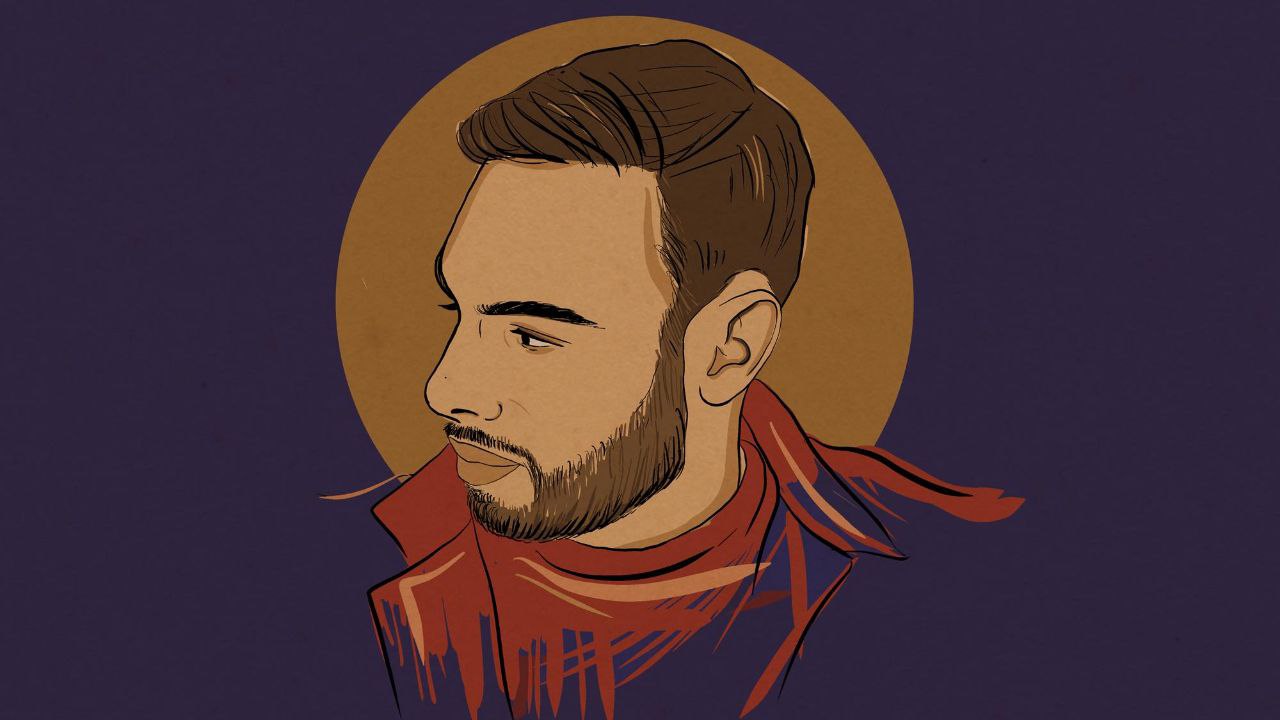
Family archives stored over the years, carried from generation to generation, are not merely nice mementoes; they also serve as a peculiar source of the nation’s historical and cultural memory. Over history, humans have not been able to conquer one single resource: time. Hence, photographs are probably the most precious items in the archive business. Serhii is a Romani researcher and illustrator. His parents once used to stand next to Crimean Tatars, awaiting deportation, so he knows from experience how important it is to understand the history of one’s family, one’s bloodline, one’s nation. He is currently in the Republic of Georgia where he is implementing a project to which he dedicated many years of diligent work, namely: a virtual Romani Photo Archive.
The lad’s ethnic roots are an intertwining of two peoples, none of which has its own state but both of which have been able to preserve their identities into our time. Ethnically, genealogically, he is mostly rooted in the Crimean Peninsula. Serhii’s family originates from Crimean Romanis, Vlakhs, and Assyrians on the mother’s side. It is quite symbolic that Assyrians are, too, a nation that was once deprived of its homeland and is now dispersed all around the world. As far as his origin is concerned, Serhii does not feel a connection to a certain country but does have a strong feeling of national/ethnic self-awareness which he cherishes inside his soul and which he intends to keep preserving.
Admit to Being a Romani
Serhii spent part of his life in the Republic of Georgia since his family was banned from returning to the Crimean Peninsula after deportation. The fate of his family is interesting but his love for history is unrelated to that. Since early childhood, he was attracted to various sciences but it was not until he completed his studies that he commenced his research into his own roots.
“The family history did not impact the choice of my specialisation. I reckon many Romanis, at certain moments in their lives, felt it was necessary to conceal their ethnic identity, in view of social or political processes. After deportation, my family was seriously oppressed in Russia, Georgia, and other countries. In my teenage years, I found it quite difficult to admit to and accept my origin; it was only way further in life that I started researching it. And it was only after I have completed my higher education that I managed to admit to my ethnicity and started to discuss it openly.”
Serhii and his sister were the firstmost members of their family who graduated from school and then proceeded to receive higher education. This helped him accept himself and proudly declare: I am a Roma.
Photo Archive in Ukraine
Today, Serhii mostly deals with graphic design. He creates illustrations, including ones for the Zhianes Info Platform, but his passion is history. This young man puts his researcher’s drive into action by implementing miscellaneous projects and scientific researches. For the past three and a half years, he has been engaged in researching photography of the Caucasus and Transcaucasia. Not so long ago, he published his first magnum opus which is geographically related to Georgia and was published in the Georgian language. Now he intends to implement another project—supported by ARKA—and create a photo archive of Ukrainian Romanis.
“I now try to merge visual art and history. I dreamt I would be able to implement my project not as an artist but as a historian and a researcher. This is why I had applied for this grant with my Romani photo archive. As of the present day, almost not a single country pays proper attention to photo documents related to the history of the Romani community (exceptions include Germany and Poland where corresponding museums have been created). Our people have been nomadic for over a thousand years but we lack proper material history. Physical items and national or ethnic attributes just get lost in the torrents of time. Material culture is supposed to be comprised of language which is currently being studied by researchers. Photos, however, are another important element which serves as an illustration of our history from the 18th century. As we observe the events of today, when the war is destroying, demolishing, and eliminating everything, we can see how Romanis are leaving Ukraine en masse, so we are obliged to preserve our heritage whichever way we can, in any possible form”.
The actual topic of his research is the Romani of Ukraine, as the lad’s roots are in Crimea, so it is only logical that he started with his family. If one draws on history, one may assert that, in the process of dispersal of Roma around the world, Ukraine was a significant place, as it was here that various groups gathered a huge linguistic load, and then gradually proceeded to settle in other countries. The researcher says that, as he was studying the life of Romani in the lands of Ukraine, he found out that there was actually hardly any oppression of these nomadic people. Due to this, Romani often “dwelled” in the same place for decades. Serhii began the collection of photos in the time of pandemic. Now, the corpus he has managed to assemble is comprised of some 500 scanned photos. There is another 200 to be obtained from the archives.
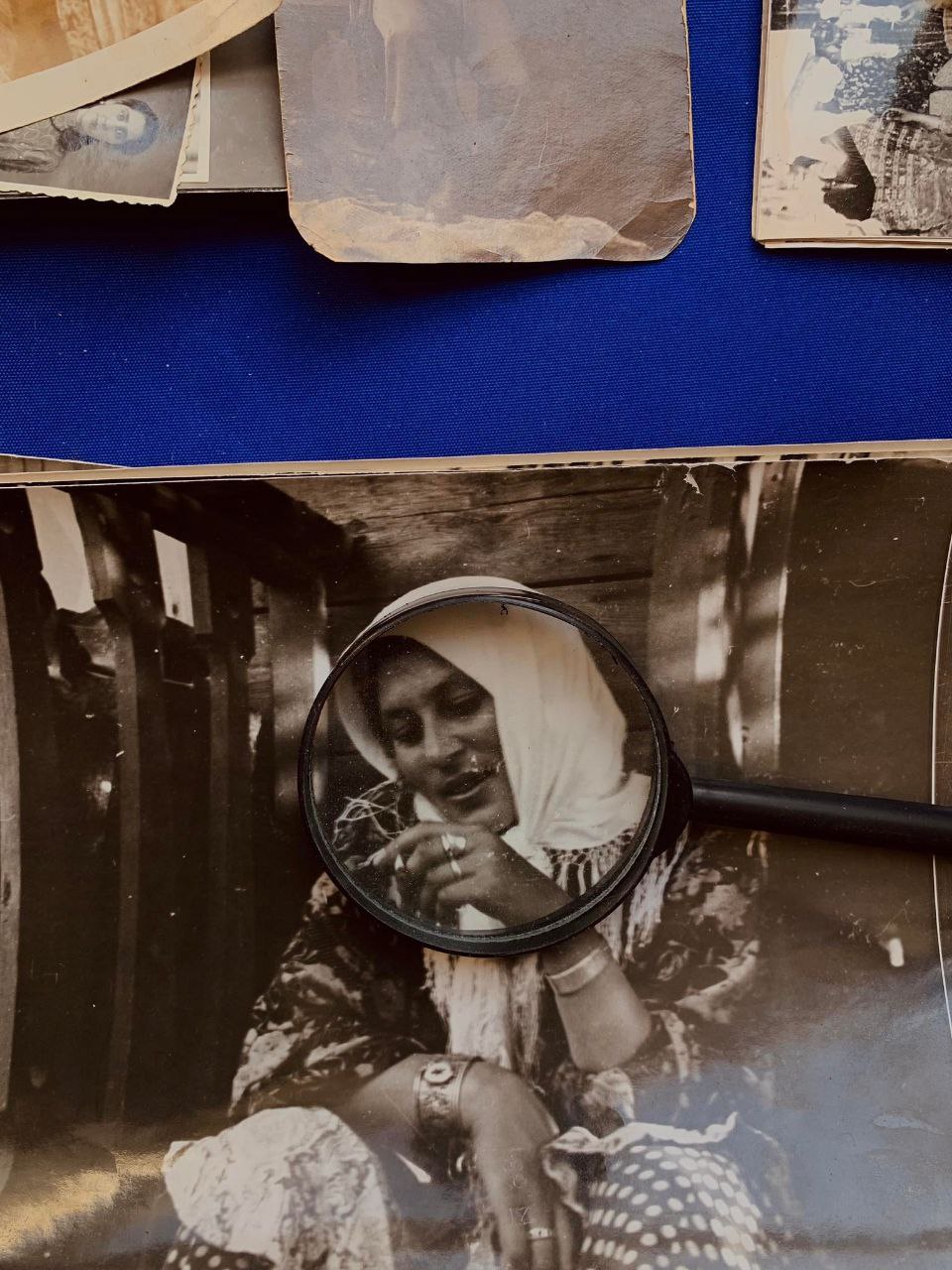
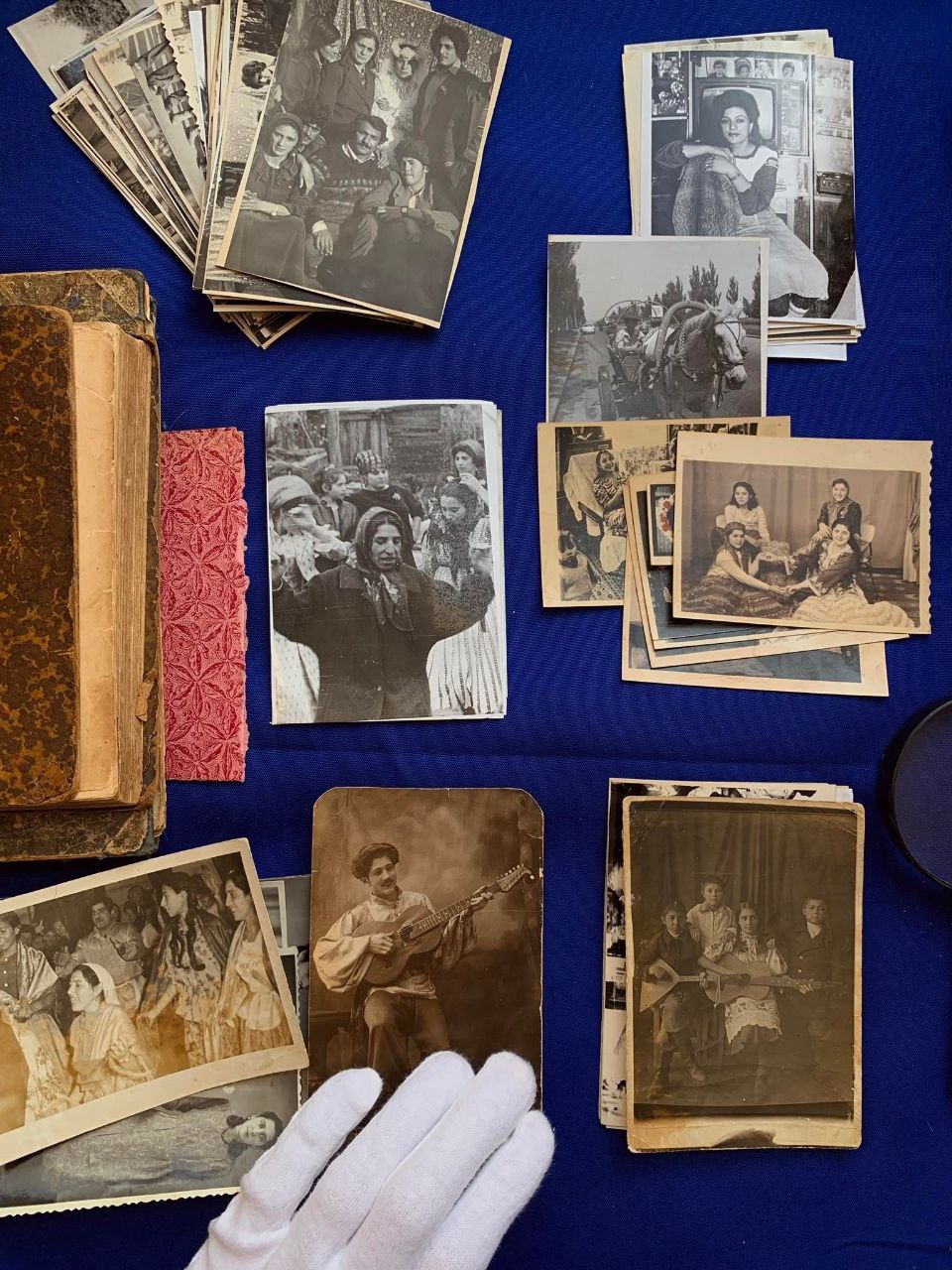
“As a historian, I started with Ukrainian archives from which I ordered photo copies. Now, I am continuing my diligent work. Despite the fact that there is war going on, archive employees are very outgoing and willing to help me scan the photos. I also collaborate with Polish and Lithuanian archives. I have succeeded in getting my hands on a lot of materials from the occupied territories of Ukraine—from Crimea in particular. Most of these photos are physical copies (hardcopies) which the families themselves handed over to me as gifts. For as long as the lockdown was in place, I travelled to meet Romani families, took their photos and scanned them. I have succeeded in getting in touch with Romanis of miscellaneous ethnic subgroups, hence I have collected some really unique photos.”
Serhii explains to me that the uniqueness of photographs consists in the fact that they are part of the family archive, and thus constitute a vivid representation of the everyday life, including marriages, funerals, and other intimate family events. State-maintained archives, on the other hand, mostly contain photos made by strangers at mass events, or merely in the street.
“It was a huge challenge to talk people into providing their photographs. Our people are quite superstitious. They do not like to give any personal items to strangers. There is even a saying: “Roma Romensa, Gaje Gjensa” (Romani with Romani, Strangers with Strangers — ed.;). Despite the fact that I myself am a Romani, I often had to enter into protracted negotiations, imploring them to give me photos. Sometimes they still declined and would rather throw the photos away in my presence than give them to me”.
Serhii tells me that he has found documents of various formats: personal data files from workplaces, commendation letters, postcards and suchlike. Each such item contains information about the life of Romanis and each such item is a sort of an artifact. Other interesting items include church records of baptism, marriage etc, as there were no civil registry offices at that time. Such materials are also being scanned and will ultimately be published online, on a website.
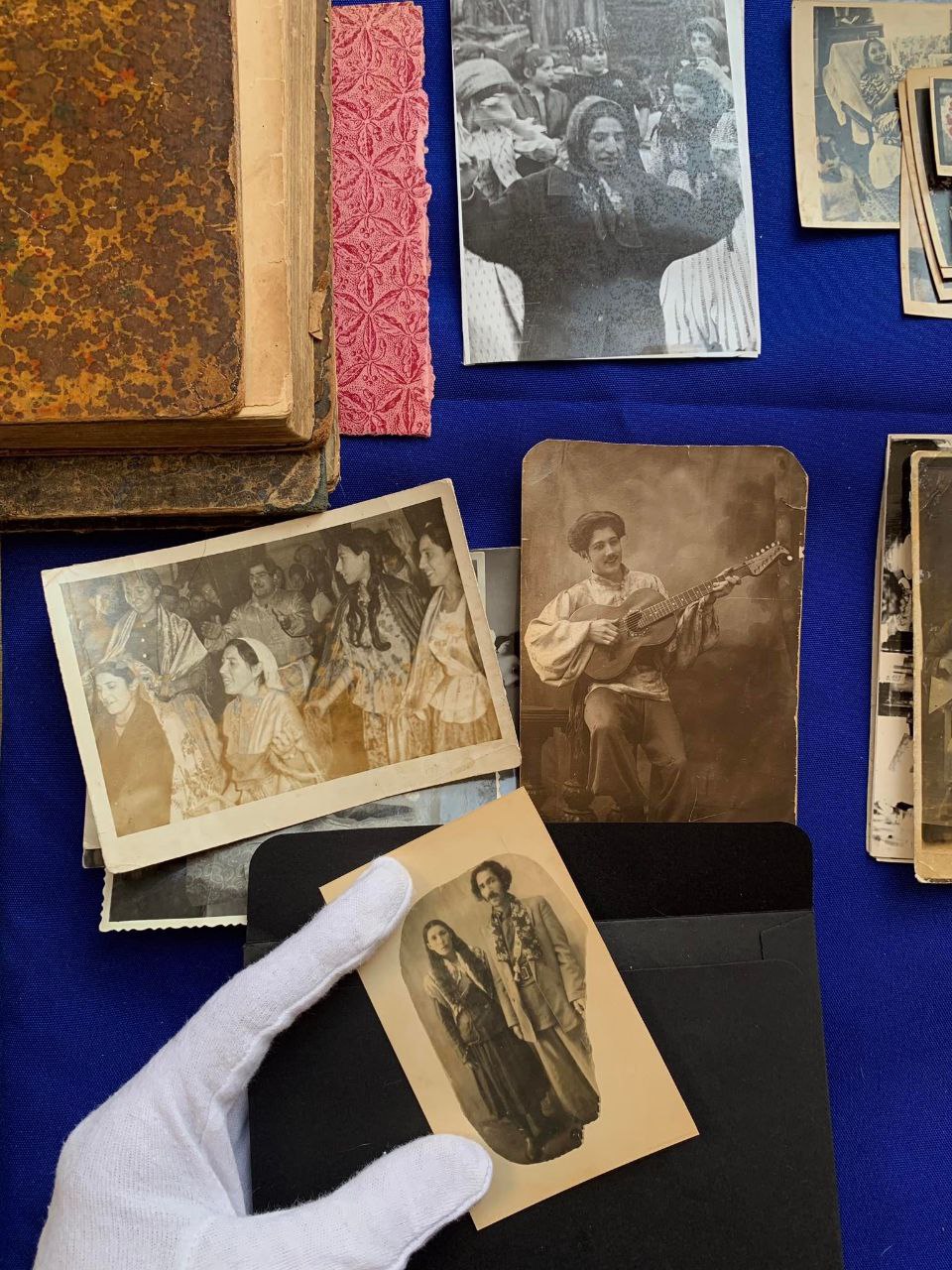
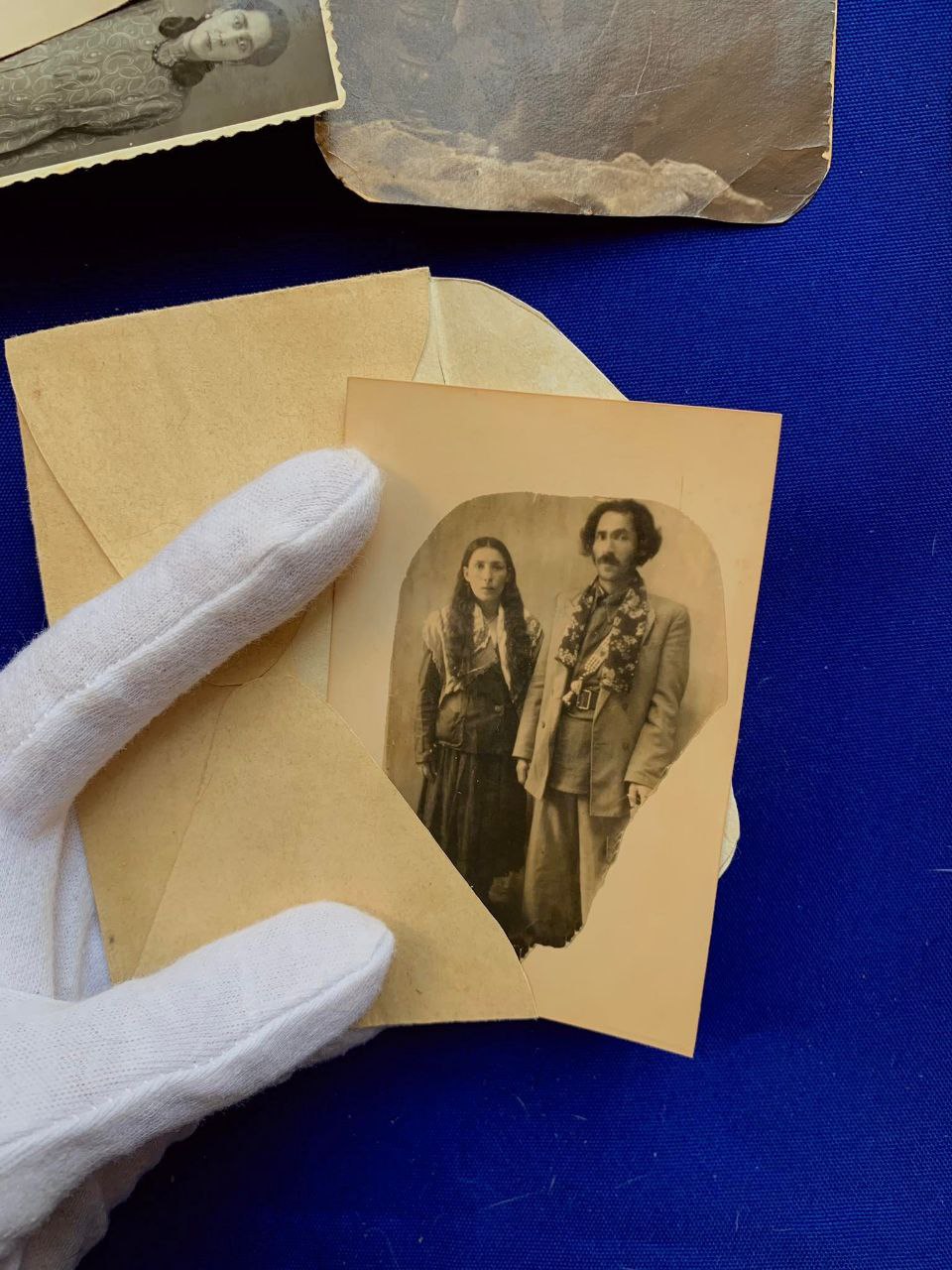
“There was a period, in the 1920s and 1930s, when the Soviets were creating Romani collective farms in Ukraine. A compendium of video materials from those times have survived into our days. It is partially propaganda-infused but still quite interesting as far as study into the life of an ethnic group within a certain period of history is concerned. These videos are mostly from Transcarpathia, Crimea, and Luhansk Province. I intend to order copies of this video footage and ultimately publish it online”.
For the time being, Serhii does not plan to expand the scope of his research; so far, his research has only covered Ukraine. He does not, however, rule out studying the lives of Romanis in other countries. There is a lot of work that can be done, contingent upon funding, of course.
Family Stories
Serhii’s family is quite conservative and he was brought up in a traditional manner. Before he and his sister went to study, no one else in his family had ever done a degree; the stereotypic behaviour was the common thing. One of his projects as an illustrator is dedicated to his own family. The artist has invested each of his pictures with a certain family story—not always a happy one but always one carried from generation to generation.For the past two years of lockdown, Serhii’s grandmother lived with them and Serhii urged her to write a diary with her memories and stories. Most of his works focus on the fate—or, rather, the misfortune—of the females of his kin.
“The fate of womanry has often been quite miserable in traditional Romani communities—my family including. Girls had to suffer a lot of misfortune and trials, all due to traditions. One of his works depicts two women whose hair is tightly interwoven into a thick braid. This is an allusion to the story of two sisters who lived in the period when their family had only just started to switch to semi-sedentary lifestyle. Marriages were then arranged by agreement of parents, but my great-grandmother fell in love with another boy. With the assistance of her sister, she eloped with that young fellow but was then captured and brought back home by force. Both girls then faced a punishment”.
The family decided that both deserved to be punished, so their hair was woven into a thick braid, cut off, and their heads were shaven completely. This was considered to be a harsh punishment, as women’s hair has always been revered in the Romani community: it represented the girl’s honour and dignity. Even nowadays, there are some communities where this tradition is very much alive. There, women can still be “disgraced by way of a haircut” as a punishment for disobedience, although the story told here is almost a hundred years old. Today, Serhii is studying animation and plans to create an animated cartoon dedicated to the role of the woman. In his photo project, he also focuses on this topic, as he tries to track changes in the everyday attire or conduct of girls and women.
“Wedding photos, for instance, are a clear demonstration of changes in the attitude towards women. The older photos are ones with the bride looking down, sometimes even sad. Then, as we approach the 1980s and the 1990s, we can see girls celebrating, expressing their emotions”.
Serhii’s mother once also wanted to study and expand her outlook but was restricted by traditions. She has since developed a grudge against her family. She now admits that it was her mother who has played a significant part in the formation of herself and her sister. Serhii’s mother decided not to repeat the mistakes of the past and has thus given her own children more room for development. Serhii now has a number of Roma-related projects in the pipeline. One of such projects will be showcased and discussed on the Zhianes platform in the nearest future.
See also
- «Невидимі. Стійкість: минуле і сучасність ромів». Як зрозуміти історію ромів через візуальну культу
- Альфреда Марковська: історія життя і порятунку інших
- «Дивись і не забувай»: 15 років Dikh He Na Bister у Кракові
- ФОТОРЕПОРТАЖ: У Києві відкрили виставку про ромську історію та ідентичність
- «Відновлення пам'яті – роми у Варшавському гетто». Історична екскурсія у Варшаві
- PHOTO REPORT: Events commemorating the victims of the Roma genocide in Babyn Yar
- 2 серпня — Міжнародний день памʼяті жертв геноциду ромів
- Коли допомога — це більше, ніж ваучер
- Антициганізм поруч: як розпізнати упередження у звичних словах і жартах
- Стереотип замість культури: як TikTok спрощує ромську ідентичність